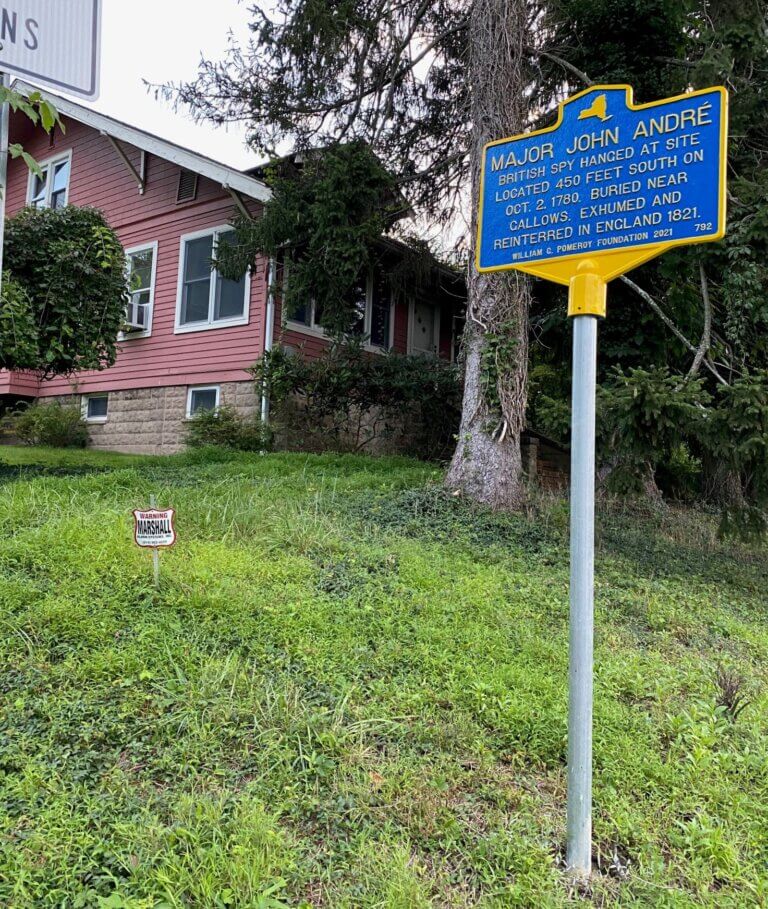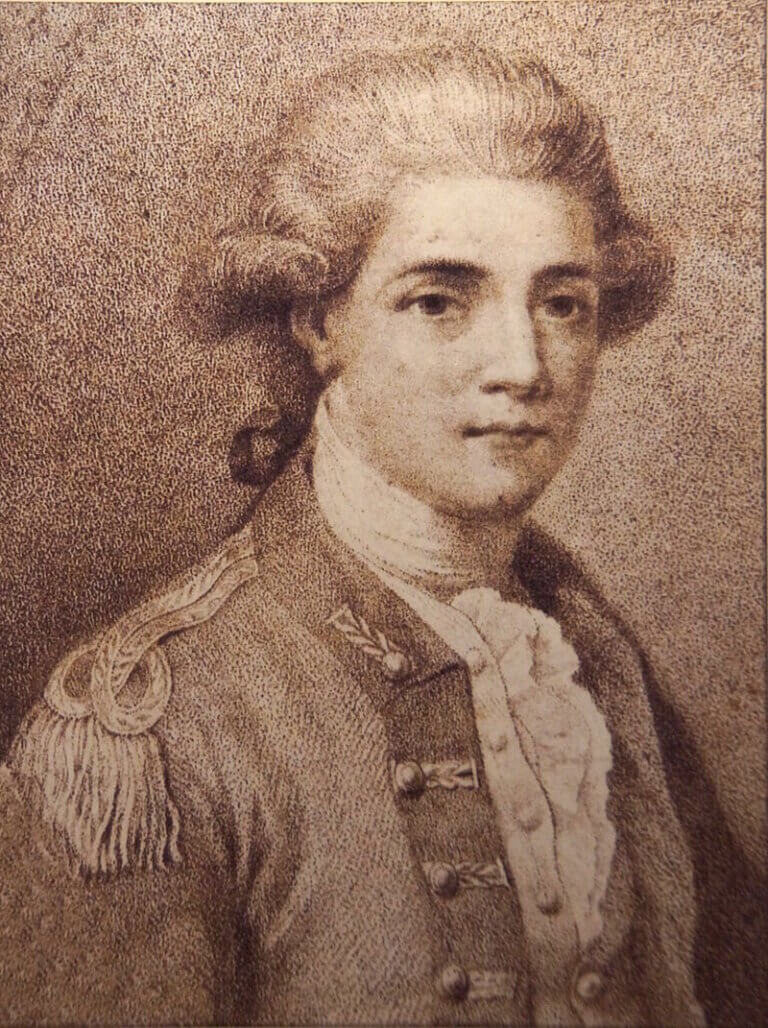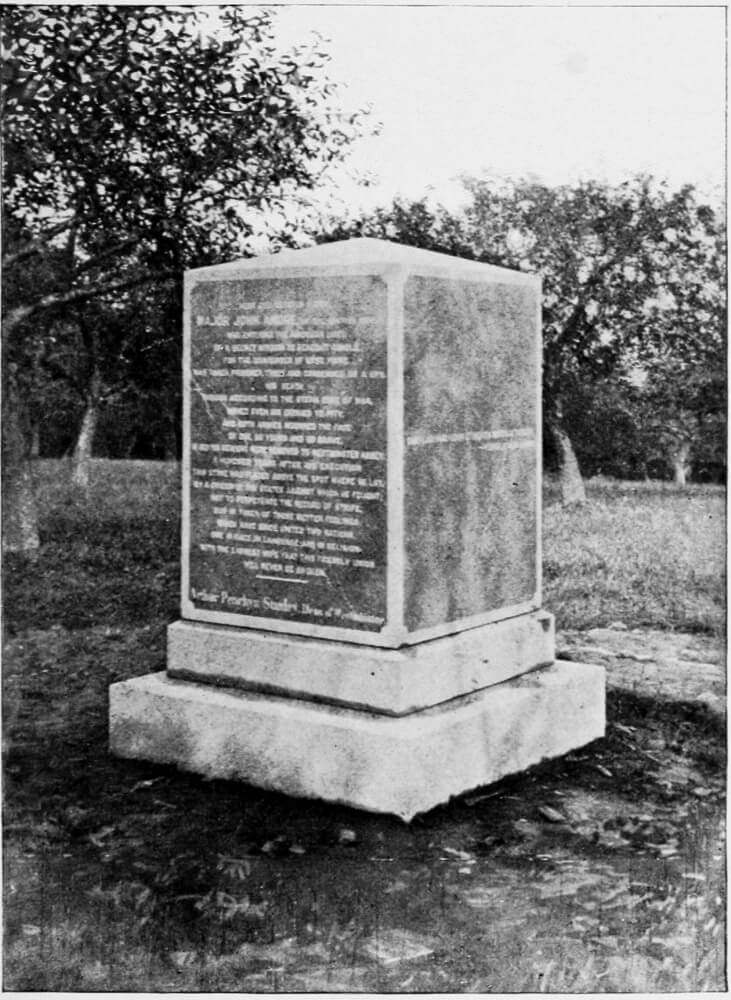MAJOR JOHN ANDRÉ
- Program
- Subject
- Location
- Lat/Long
- Grant Recipient
-
NYS Historic
-
People
- 161 Old Tappan Rd, Tappan, NY 10983, USA
- 41.022462, -73.955018
-
Tappantown Historical Society
MAJOR JOHN ANDRÉ
Inscription
MAJOR JOHN ANDRÉBRITISH SPY HANGED AT SITE
LOCATED 450 FEET SOUTH ON
OCT. 2, 1780. BURIED NEAR
GALLOWS. EXHUMED AND
REINTERRED IN ENGLAND 1821.
WILLIAM G. POMEROY FOUNDATION 2021
Just a short distance from this site, on October 2, 1780, British Spy Major John André was hanged and buried near the gallows.
By September of 1780, the United States had been at war with Great Britain for more than four years and won several important, strategic victories. A handful of these key victories, such as the Capture of Fort Ticonderoga, Battle of Fort Stanwix and the Battle of Saratoga, were achieved through the decisive leadership of Brigadier General Benedict Arnold. However as the war dragged on, Arnold became disillusioned with the American cause and sought to join the enemy. While in command of the strategic position at West Point, Arnold held meetings with British spy, Major John André and successfully arranged a deal with the British in which he would surrender his command of West Point in exchange for a large sum of money and a general’s rank in the British Army.
Benedict Arnold boarded the HMS Vulture and escaped; however, Major André was forced to travel over land. While attempting to reach the British lines, he was intercepted by militiamen who discovered Arnold’s betrayal through documents concealed in André’s boot.
Brought before military tribunal on September 29, 1780, Major André was found guilty of espionage and sentenced to death on October 2, 1780. Col. Benjamin Tallmadge, present at Major André’s execution, describes the event in his memoir:
As I was with him most of the time from his capture, and walked with him as he went to the place of execution, I never discovered any emotions of fear respecting his future destiny before I reached Tappan, nor of emotion when his sentence was made known to him. When he came within sight of the gibbet, he appeared to be startled, and inquired with some emotion whether he was not to be shot. Being informed that the mode first appointed for his death could not consistently be altered, he exclaimed, “How hard is my fate!” but immediately added, “it will soon be over.” I shook hands with him under the gallows and retired. Major Andre was executed in his military uniform in which he was laid in his coffin, but before he was interred, I feel satisfied that his servant took off his coat and perhaps other outer garments.
After his execution, Major André was buried near the gallows. The site of his burial is believed to have been marked by a pile of rocks. More than 40 years after Major André’s death, in 1821, the Duke of York successfully arranged the exhumation of Major André’s remains and transported them back to England to be interred at Westminster Abbey. Around 1879, American businessman Cyrus W. Field erected a granite monument to commemorate the site. The Major André Monument was met with opposition from members of the community. Not long after its installation it was vandalized several times. Despite this, it still stands today, forever marking the place where Major John André died and was buried. The monument was placed on the National Register of Historic Places in 2006.



